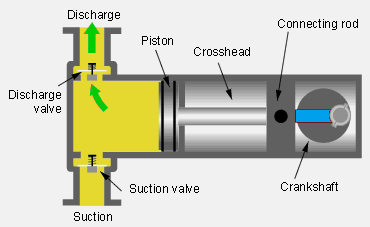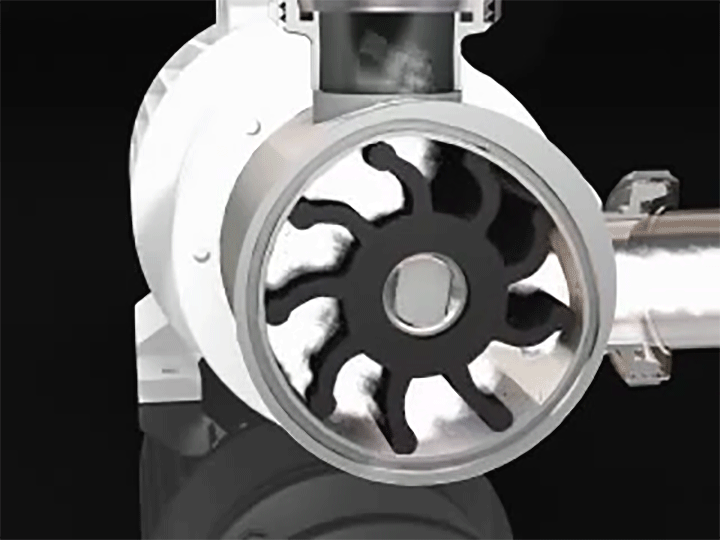One may look upon any pump and from the outside, contemplate that only the size of any given pump is what separates one pump from another. However, beyond the housing of a pump, the differences between pumps such as their shapes and functions are vastly different: this becomes clearer when the interior of a pump is seen. One key component for a pump which separates one pump from another is the impeller of the pump. An impeller is “the key component of a centrifugal pump. It consists of a series of curved vanes. These are normally sandwiched between two discs (an enclosed impeller). For fluids with entrained solids, an open or semi-open impeller (backed by a single disc) is preferred”1. Impellers vary greatly based on their intended function.
![]()
There are two main types of pumps used in industrial processes: centrifugal pumps and positive-displacement pumps. A centrifugal pump is used for simple applications, such as moving water, because they are able to move low-viscosity fluid efficiently and inexpensively. The flow rate of centrifugal pumps is also variable, meaning that the flow rate can be adjusted to “different speeds depending on pressure.”2. Centrifugal pumps also utilize a rotating impeller within their housing, utilizing increases in pressure to move fluid. Below is a detailed example of different centrifugal pump impellers:
![]()
“Open impeller. Open impellers have the vanes free on both sides. Open impellers are structurally weak. They are typically used in small-diameter, inexpensive pumps and pumps handling suspended solids.
Semi-open impeller. The vanes are free on one side and enclosed on the other. The shroud adds mechanical strength. They also offer higher efficiencies than open impellers. They can be used in medium-diameter pumps and with liquids containing small amounts of suspended solids. Because of minimization of recirculation and other losses, it is very important that a small clearance exists between the impeller vanes and the casing.
Closed impeller. The vanes are located between the two discs, all in a single casting. They are used in large pumps with high efficiencies and low required Net Positive Suction Head. The centrifugal pumps with closed impeller are the most widely used pumps handling clear liquids. They rely on close-clearance wear rings on the impeller and on the pump casing. The closed impeller is a more complicated and expensive design not only because of the impeller, but the additional wear rings are needed.”3
Positive displacement pumps, however, are used for different purposes. A positive displacement pump is used for “complex applications – like those involving suction lift. They create a vacuum on the inlet side and can reach vacuums of 25 to 28” hg – a great choice for lift.”4 A positive displacement pump can operate at very high pressures, and due to its working method, a positive displacement pump becomes more efficient at higher pressures. Here are two examples of two common types of positive displacement pumps, the reciprocating pump and the rotary pump:

Source: https://www.globalpumps.com.au/blog/what-are-the-differences-between-pump-types
“Reciprocating: In this design, the suction is created by a piston which plunges into and pulls out of the material. Valves are used to ensure that the flow only moves in one direction. A reciprocating design therefore pulses the liquid at identical intervals”5

Source: https://www.globalpumps.com.au/blog/what-are-the-differences-between-pump-types
“Rotary: A rotary design uses two gears which mesh together. The movement of the gears creates high pressure on the discharge side which creates flow”6
1 https://www.michael-smith-engineers.co.uk/resources/useful-info/centrifugal-pumps
2 http://www.visserssales.com/Blog/pdf/Centrifugal-vs-PD.pdf
4 same as 2
5 https://www.globalpumps.com.au/blog/what-are-the-differences-between-pump-types
6 same as 5